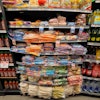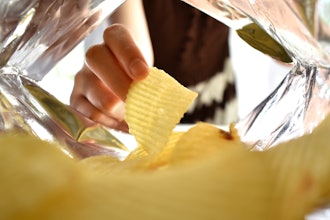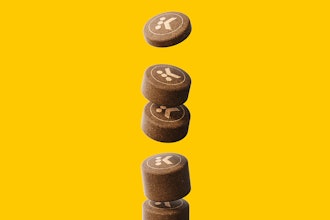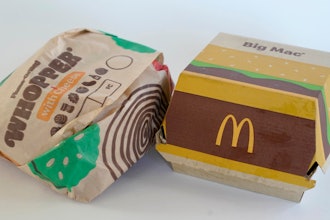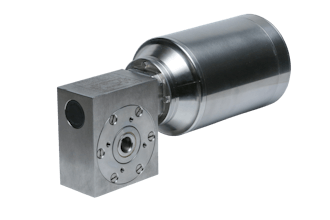Businesses of all kinds have been recycling old corrugated containers (OCC) for decades, driving a 93 percent recovery rate for the ubiquitous cardboard box and saving money on waste disposal, and sometimes even earning extra revenue from OCC sales.
Now there’s a new opportunity for food manufacturers and bakeries to elevate their recycling programs for even bigger sustainability and cost benefits. Most small- to mid-sized bakeries, restaurants and other food-related businesses receive bulk products such as flour, sugar, starch and other dry ingredients in paper shipping sacks.
If an ingredient doesn’t require a moisture barrier to maintain freshness (for example, flour), it may be shipped in sacks that don’t have plastic film layers or liners. More than one billion of these unlined paper shipping sacks are used each year to package dry food ingredients. And, these unlined paper shipping sacks can be easily recycled in the same collection stream as OCC.
What’s the Big Deal?
Many businesses have established profitable recycling programs for OCC. Adding unlined paper shipping sacks to an existing recycling program not only reduces a company’s waste disposal costs and diverts waste from landfills, it also improves their environmental footprint and sustainability profile.
The paper industry wants to increase recycling of unlined paper shipping sacks for two reasons. First, the paper sacks provide high-quality paper fiber that is needed for production of new paper products. Second, the industry wants to increase recycling of paper products to achieve its goal to exceed 70 percent paper recovery for recycling by 2020.
Good News: It’s Easy!
It’s easy to add unlined paper shipping sacks to an existing recycling program. Follow these simple steps:
- Contact your recycling or waste hauler and ask if they will accept unlined paper shipping sacks along with OCC collected at your facility. The recycling hauler may need to check with their customer — the paper mill. Every paper mill is different and each mill has specific materials they are willing and able to use to make new paper and paper-based packaging. The Paper Shipping Sack Manufacturers’ Association can provide information to help pave the way.
- Ask your recycler if the sacks can be collected in the same container as OCC, or if you should use separate containers.
- Set up collection points for recyclable materials near their point of use. If paper sacks are emptied directly into a mixer, try placing a rolling cart or bin beside the mixer if you have the space. Convenience is important to encourage proper collection without interrupting workflow.
- Shake the sacks clean before placing them into the collection bins (or adding them to your OCC collection). The sacks should be completely empty, with no residue left behind, to ensure the quality of the paper is maintained and to optimize your revenue.
It’s that easy.
Tricks of the Trade
Teach your employees to recognize an unlined paper shipping sack that is eligible for this recycling program. Unlined sacks are more readily recycled than those with plastic films or other liners. There’s a simple test to tell the difference between a lined and an unlined sack. Simply try to tear the paper. A plastic film will resist tearing and the torn edge of a coated or lined sack will have a visible layer of plastic inside or on its surface.
If your recycler accepts the sacks commingled with OCC, ask your ingredient suppliers to package their products in unlined sacks with the recycling emblem shown here. All they need to do is ask their paper packaging suppliers to print the logo on the sacks. This makes it even easier for your employees to recognize the recyclable sacks and know that they can be mixed with OCC for collection. It also signifies your company’s and your suppliers’ commitment to sustainability.
Proving Value: A Case Study
Bake ‘n Joy, headquartered in North Andover, Massachusetts, provides mixes for breads, donuts, muffins and more to bakeries, supermarkets and foodservice customers. Bake ‘n Joy receives many of the ingredients used to make its products in unlined paper shipping sacks.
For many years, Bake ‘n Joy collected its OCC and used unlined paper shipping sacks separately in carts and wheeled the OCC to a baling machine and the sacks to a compactor. After working with their recycler, they were able to save time and space by collecting OCC and paper sacks together. The company later began combining both materials in the same 42-yard compactor before shipping them to a local recycling center.
Bake ‘n Joy has been saving money ever since and has never looked back.
Takeaway
Mixing clean, unlined paper shipping sacks with OCC for recycling is now easier than ever. An information kit is available on PSSMA’s website, www.pssma.org, with recycling instructions and other information to help you recycle unlined paper shipping sacks for the best value possible.
Now that’s a sweet deal for your company and the environment.


